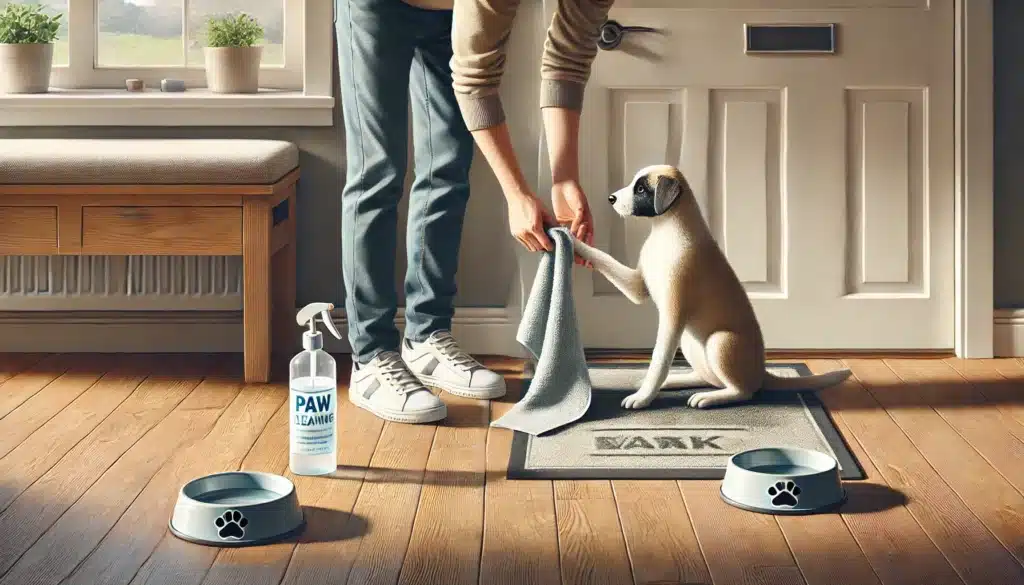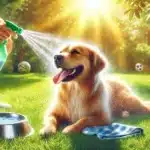Your dog’s paws are in constant contact with the ground — collecting dirt, bacteria, pollen, and even harmful substances like road salt or pesticides. Cleaning their paws after each walk is one of the simplest ways to keep your pet healthy and your home cleaner.
In this guide, we’ll break down why it’s important, how to do it properly, what tools you can use, and how to make paw care part of your daily routine.
Why Cleaning Paws Is Important
Dogs explore the world with their feet. Their paw pads are sensitive, and without regular cleaning, your dog can suffer from:
- Dry, cracked pads
- Irritations from chemicals or allergens
- Small cuts or injuries going unnoticed
- Paw infections from bacteria or fungi
- Muddy paw prints all over your home
Plus, it’s a great chance to inspect their paws for debris like pebbles, thorns, or ticks — especially after walks in rough terrain.
When Should You Clean Your Dog’s Paws?
Ideally, you should clean your dog’s paws:
- After every walk (especially in urban areas)
- After walks on muddy, snowy, or sandy terrain
- If your dog has allergies or sensitive skin
- During allergy seasons (pollen gets trapped in paws)
- If you notice excessive licking or chewing of paws
A quick clean can prevent bigger problems later.
Supplies You’ll Need
Depending on how dirty the paws are, you may want to have the following:
- A towel (microfiber works best)
- Pet-safe wet wipes
- A shallow bowl of lukewarm water
- Dog paw washer (portable paw cleaning cups)
- Soft-bristled brush (for muddy paws)
- Dog-safe paw balm or moisturizer (for dry pads)
- Tweezers (for removing small objects)
Pro tip: Keep a paw-cleaning kit by the door.
Step-by-Step: Cleaning Your Dog’s Paws After a Walk
1. Choose a Calm Spot
Pick a place near the entrance or in the bathroom with good lighting. Keep your dog on a leash if needed for control.
2. Inspect the Paws
Look between the toes, under the pads, and around the nails for:
- Dirt or mud buildup
- Small stones, glass, or splinters
- Redness, swelling, or cuts
- Insect bites or ticks
Use a soft touch — some dogs are sensitive to paw handling.
3. Wipe or Rinse
- Light cleaning: Use a damp towel or pet-safe wipe to gently clean each paw.
- Heavier cleaning: Use a shallow bowl or paw washer filled with lukewarm water. Dip and rotate each paw.
- Mud or snow: Loosen stuck debris with a soft brush, then rinse or wipe.
Avoid using human baby wipes unless approved by your vet — some contain alcohol or fragrances that can irritate your dog’s skin.
4. Dry the Paws Thoroughly
Always dry each paw completely to prevent fungal or bacterial growth. Use a clean towel, paying attention between the toes.
Never leave paws damp — especially in colder months.
5. Apply Moisturizer (Optional)
If your dog’s paw pads are dry or cracked, apply a small amount of dog-safe balm or paw moisturizer. Do not use human lotion — it can be toxic.
Allow a few minutes for absorption before letting your dog walk on floors.
Tips to Make Paw Cleaning Easier
- Start young: Get puppies used to paw handling early
- Make it positive: Use treats and a soothing voice
- Keep sessions short: Especially if your dog is fidgety
- Use non-slip mats: So your dog feels stable while standing
- Turn it into a routine: After every walk, same place, same steps
The more consistent you are, the more your dog will cooperate.
Winter and Summer Paw Care
Weather adds extra challenges for paw health:
❄️ In Winter:
- Salt and de-icing chemicals can burn paw pads
- Snow clumps can cause discomfort between toes
- Dry air can lead to cracking
Tip: Rinse paws after every walk and apply balm regularly
☀️ In Summer:
- Hot pavement can burn paws
- Sand and rough terrain can cause abrasions
Tip: Walk during cooler times and always inspect after beach or trail visits
What About Paw Washing Devices?
Paw washers — small cups with soft bristles and water — can be incredibly effective for deeper cleaning. They’re great for muddy days and easy to use with minimal mess. Just make sure to dry the paws afterward.
Choose one that’s the right size for your dog’s paws, and clean the device regularly to prevent bacteria buildup.
When to See a Vet
Contact your vet if you notice:
- Persistent licking or chewing of paws
- Cracks that bleed or worsen
- Swelling, heat, or bad odor
- Discoloration or peeling
- Limping or reluctance to walk
These could be signs of infection, allergies, or injury that require treatment.
Final Thoughts: Healthy Paws, Happy Dog
Cleaning your dog’s paws may seem like a small task, but it has a big impact. From hygiene to health to home cleanliness, it’s one of the best habits you can build as a dog owner.
It takes only a few minutes a day — but it keeps your dog’s paws in top condition, your floors a little cleaner, and your relationship stronger through care and attention.







